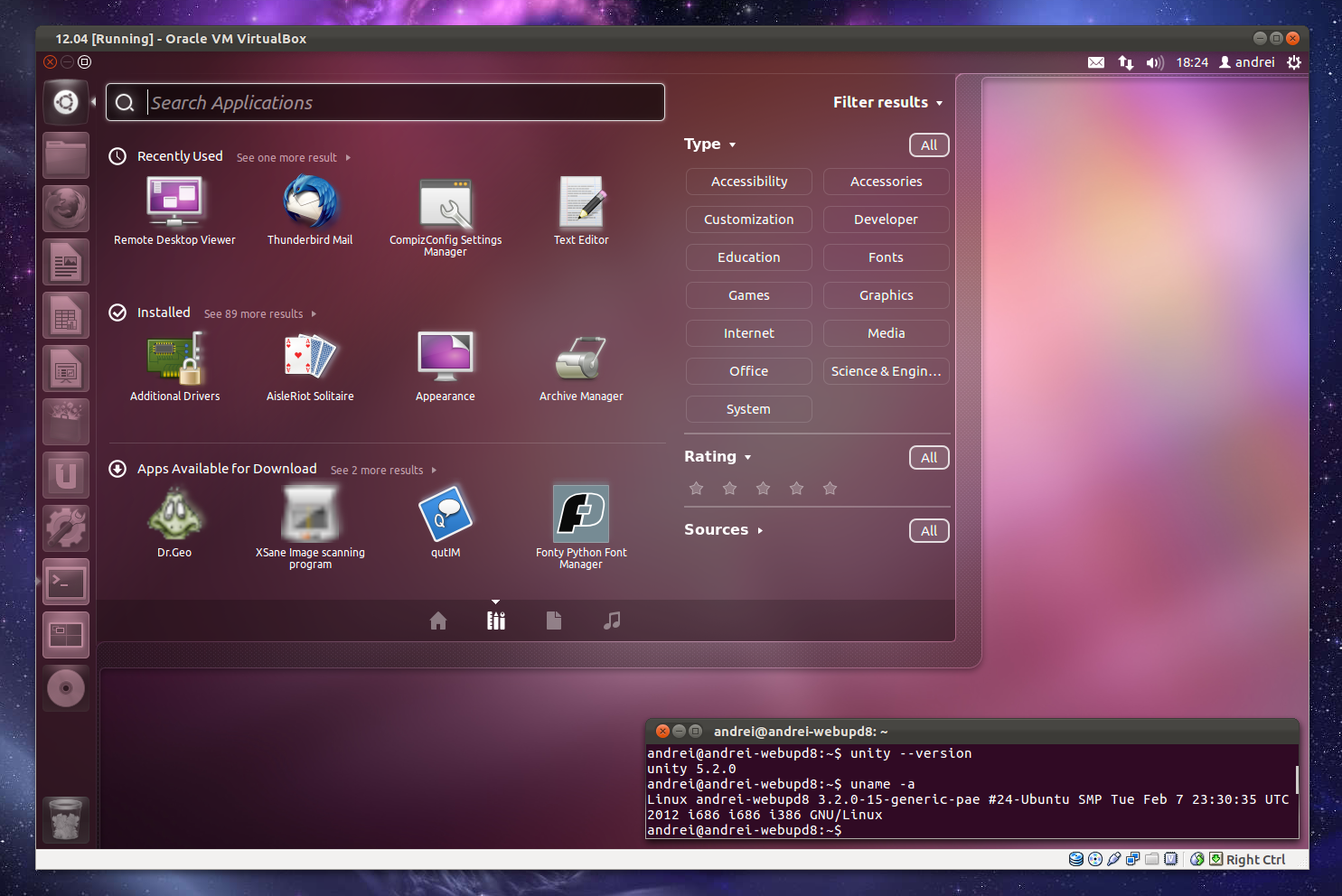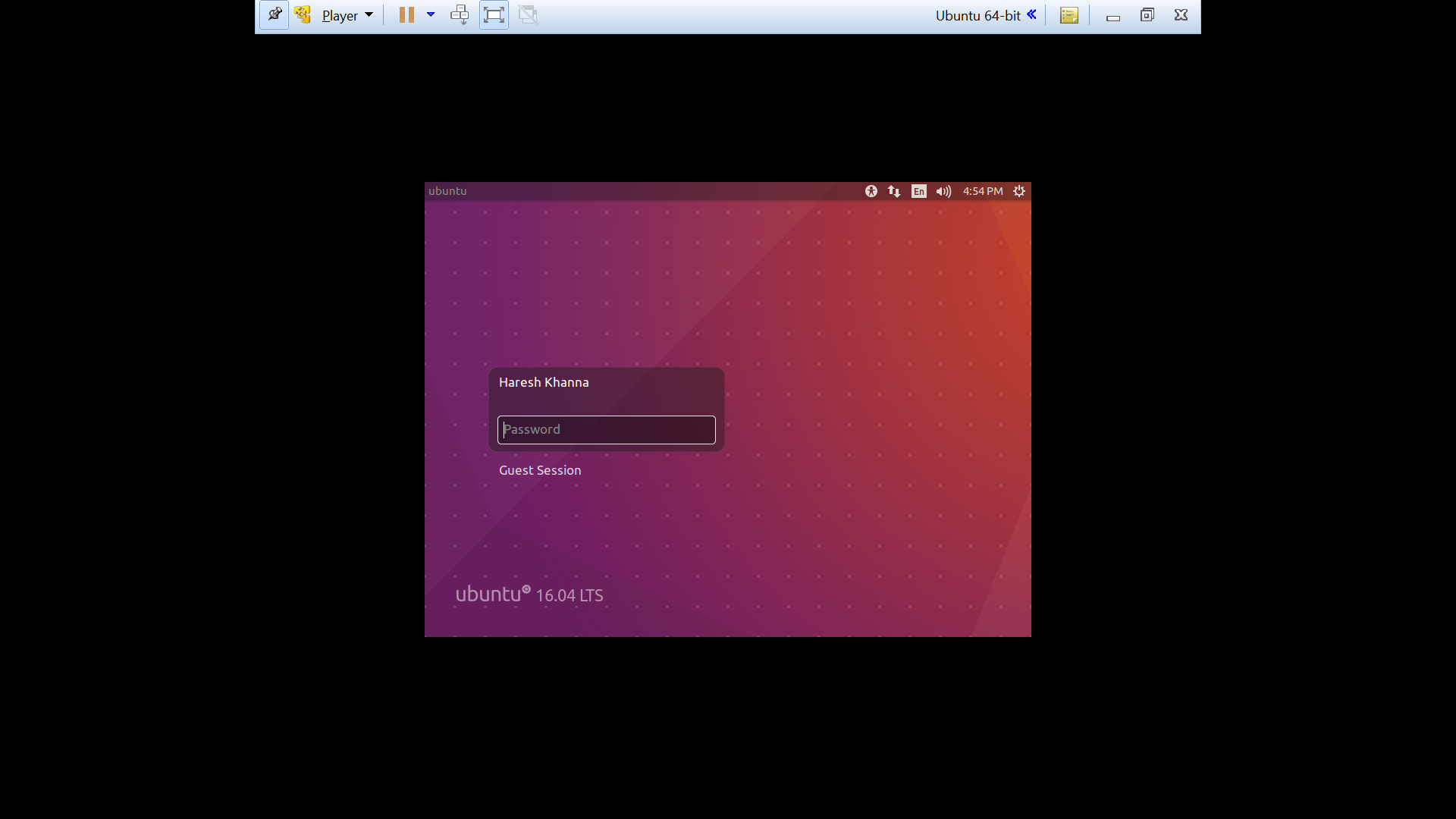
Why would I mess with networks? It is set to Bridged Adapter so DHCP will assign an IP address in my home LAN range and not the general 10.x.x.x range. I used the Oracle VM VirtualBox itself to do it, from creating the VHD all the way through adding updates until it was up-to-date. I created the VM from scratch using an Ubuntu-Live DVD. If so, then I could use some help finding out how to reverse what I've done. There doesn't appear to by any way to reverse this strange setup unless there is some sort of key combination I inadvertently hit somehow that caused it. THis makes sense since the whole OS is hosted on my Windows 10 system. I tried to use a different diver, but the caption across the top said I was using the VMWare SVGA II Adapter and wouldn't let me use anything else. I opened the screen settings dialogue and it was still set to 1920x1080 (the normal size of my screen) but in actuality nowhere that size. The display was "stuttery" as well as completely freezing for seconds at a time.

The screen followed the now-enlarged mouse pointer everywhere it went. it was as if the OS had assumed I had a huge screen of around 5000x5000 pixels, yet the icons at the left were five times as large as normal. Today, I wasn't doing a thing-with no widows open-and suddenly the screen flashed for half a second, then returned, but with a weird resolution I couldn't figure out. I have been running Ubuntu 20.04 for quite some time now and having no problems at all. This mounts the ISO file and presents it to your Windows guest as a CD-ROM.If this is the wrong spot, Please more it to where it should be. In the Virtual Media Manager, select the ISO file and click the Add button. On Oracle Solaris hosts, this file is in the additions folder where you installed Oracle VM VirtualBox, usually /opt/VirtualBox. On a Linux host, this file is in the additions folder where you installed Oracle VM VirtualBox, usually /opt/VirtualBox/. The file is located in the Contents/MacOS folder.

Right-click on the Oracle VM VirtualBox icon in Finder and choose Show Package Contents.

On Mac OS X hosts, this file is in the application bundle of Oracle VM VirtualBox. On a Windows host, this file is in the Oracle VM VirtualBox installation directory, usually in C:\Program files\Oracle\VirtualBox. In the Virtual Media Manager, click Add and browse your host file system for the VBoxGuestAdditions.iso file. This displays the Virtual Media Manager, described in Section 5.3, “The Virtual Media Manager”. Select Optical Drives from the Devices menu in the virtual machine's menu bar and then Choose/Create a Disk Image. Start the virtual machine in which you have installed Windows. If you prefer to mount the Guest Additions manually, you can perform the following steps:


 0 kommentar(er)
0 kommentar(er)
